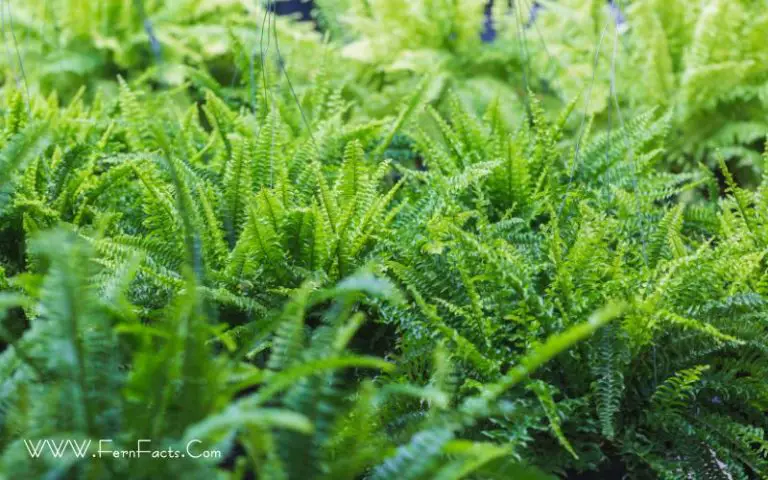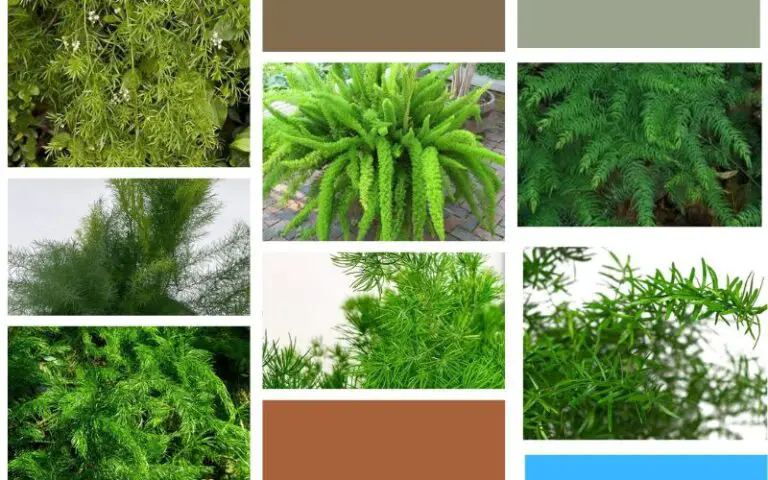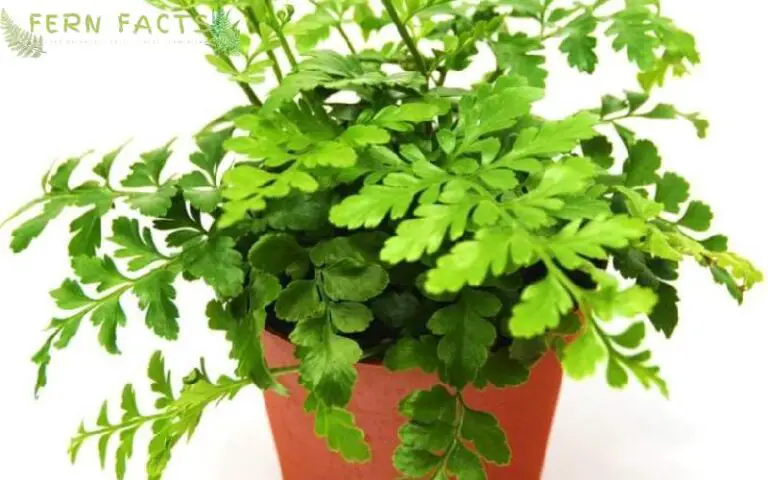6 Stunning Indoor Fern Types: Beautify Your Home!
Indoor ferns enhance home decor with their lush greenery and varied textures. Popular types include the Boston Fern and Maidenhair Fern.
Indoor ferns are beloved for bringing a touch of nature’s serenity into your living space. These versatile houseplants come in various shapes and sizes, each with its unique appeal.
From the arching fronds of the Boston Fern to the delicate, fan-shaped leaves of the Maidenhair Fern, there’s a variety to suit every indoor garden aesthetic.
Ferns are visually appealing and known for their air-purifying qualities, making them a healthy addition to any home or office.
Easy to care for, these plants thrive in humid environments with indirect light, creating a tranquil, green oasis indoors.
Whether you’re a seasoned plant enthusiast or new to indoor gardening, ferns offer a stunning and gratifying experience.
1. Boston Fern
2. Maidenhair Fern
3. Bird’s Nest Fern
6 Popular Indoor Fern Varieties
Indoor ferns bring a lush, green vibe to any space. Ferns stand out among the myriad of plants with their unique leaf structures and growth habits.
Perfect for pots or hanging baskets, these varieties are some of the best indoor fern types to enhance your indoor garden.
1. Boston Fern

The Boston Fern is a classic choice for home decor. Its long, arching fronds create a stunning display. This fern thrives in high humidity and indirect light, making it a great indoor fern for pots.
2. Maidenhair Fern

Delicate and elegant, the Maidenhair Fern features small, fan-shaped leaves on wiry stems. To showcase its beauty, it prefers moist soil and a shaded spot.
3. Bird’s Nest Fern
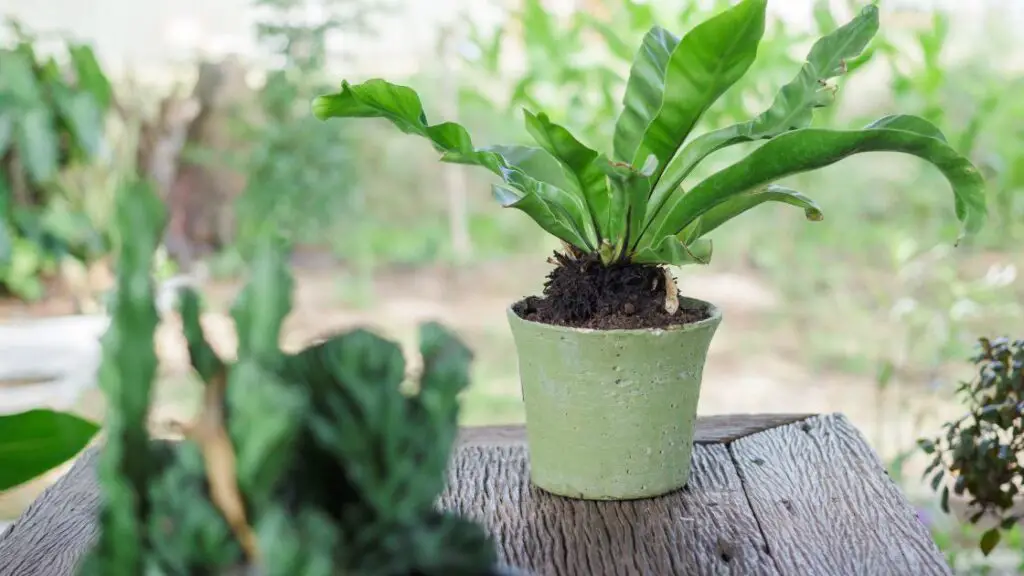
The Bird’s Nest Fern stands out with ripple-edged fronds that emerge from a central rosette. Bright, indirect light keeps this fern happy and healthy.
4. Staghorn Fern (platycerium Bifurcatum)
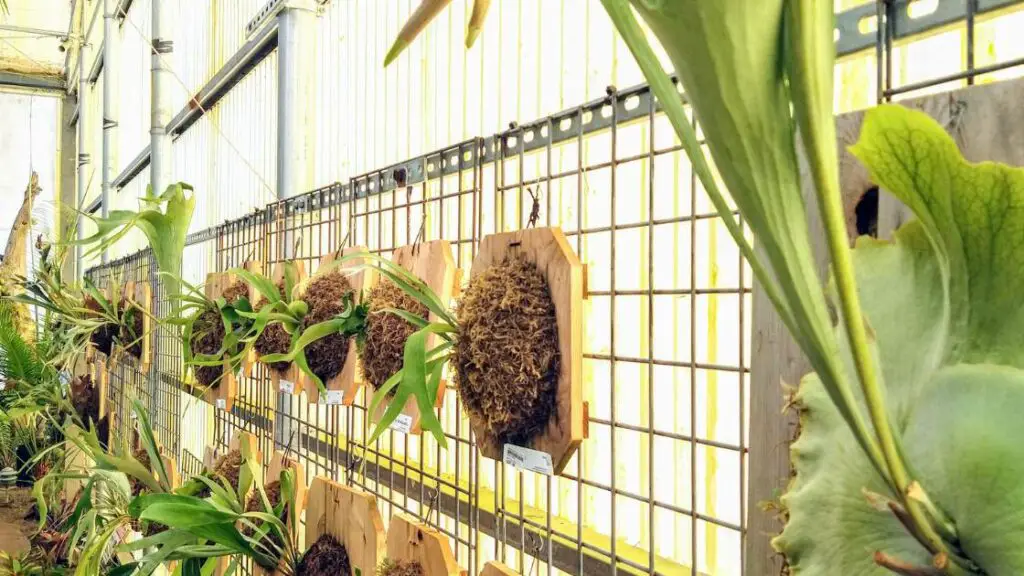
Staghorn Fern boasts an exotic look with antler-like fronds. It’s a perfect fern for an indoor garden, often mounted on boards or hung for a dramatic effect.
5. Lemon Button Fern

Compact and charming, the Lemon Button Fern gets its name from the lemony scent of its button-sized leaves. It’s well-suited for small spaces and tabletops.
6. Autumn Fern (dryopteris Erythrosora)

Unique for its changing colors, the Autumn Fern displays fronds that turn from coppery-red to deep green. It’s a dynamic addition to any fern collection.
Care Tips For Indoor Ferns
Indoor ferns add a touch of wilderness to your home. Their lush green fronds can bring life to any corner.
But to keep them looking their best, you need to know the right care tips. Let’s explore how to keep these beauties thriving indoors.
Light And Temperature Requirements
Ferns prefer gentle, filtered light rather than direct sunlight. The ideal spot is near a window with sheer curtains, which ensures they get enough light without the harsh sun.
For optimal growth, keep the room temperature between 65-75°F (18-24°C). Avoid placing your fern near heat sources or drafts.
Watering And Humidity Needs
- Keep the soil consistently moist, but not soggy. Overwatering can lead to root rot.
- Use lukewarm water to avoid shocking the plant’s roots.
- Ferns love humidity. Consider placing a humidifier nearby or use a pebble tray with water.
- Mist the fronds regularly with water to increase moisture around the plant.
Soil And Fertilization
| Aspect | Care Detail |
|---|---|
| Soil Type | Use a light, well-draining potting mix rich in organic matter. |
| Fertilization | Feed your fern with a balanced liquid fertilizer every two months during the growing season. |
| pH Level | Ferns thrive in slightly acidic soil, with a pH of 5.0 to 5.5. |
Remember, each fern species might have its own specific needs. Always check the care instructions for your particular type of fern.
With the right care, your indoor ferns will flourish and transform your home into a green oasis.
Propagation Methods
Indoor ferns can multiply in several exciting ways, each suitable for different fern types. Learn the best techniques to grow your fern collection.
Division
Division is a simple way to create new plants. It involves separating a mature fern into smaller pieces. Here’s how:
- Carefully take the fern out of its pot.
- Find natural divisions in the root ball.
- Use your hands or a knife to split the fern.
- Plant each section in fresh soil.
- Water gently and watch new ferns grow.
Spores
Ferns can also grow from spores. These are tiny seeds found on fern leaves. To propagate:
- Collect spore-laden leaves.
- Place them on a piece of paper to dry.
- Shake out the spores onto fresh soil.
- Cover with plastic to keep humidity.
- Wait for tiny ferns to emerge.
Offsets
Offsets
Offsets, or pups, are mini ferns that grow from the parent plant. Here’s what to do:
- Identify offsets at the fern’s base.
- Cut them off carefully with clean scissors.
- Plant them in moist soil.
- Keep the soil damp until they are established.
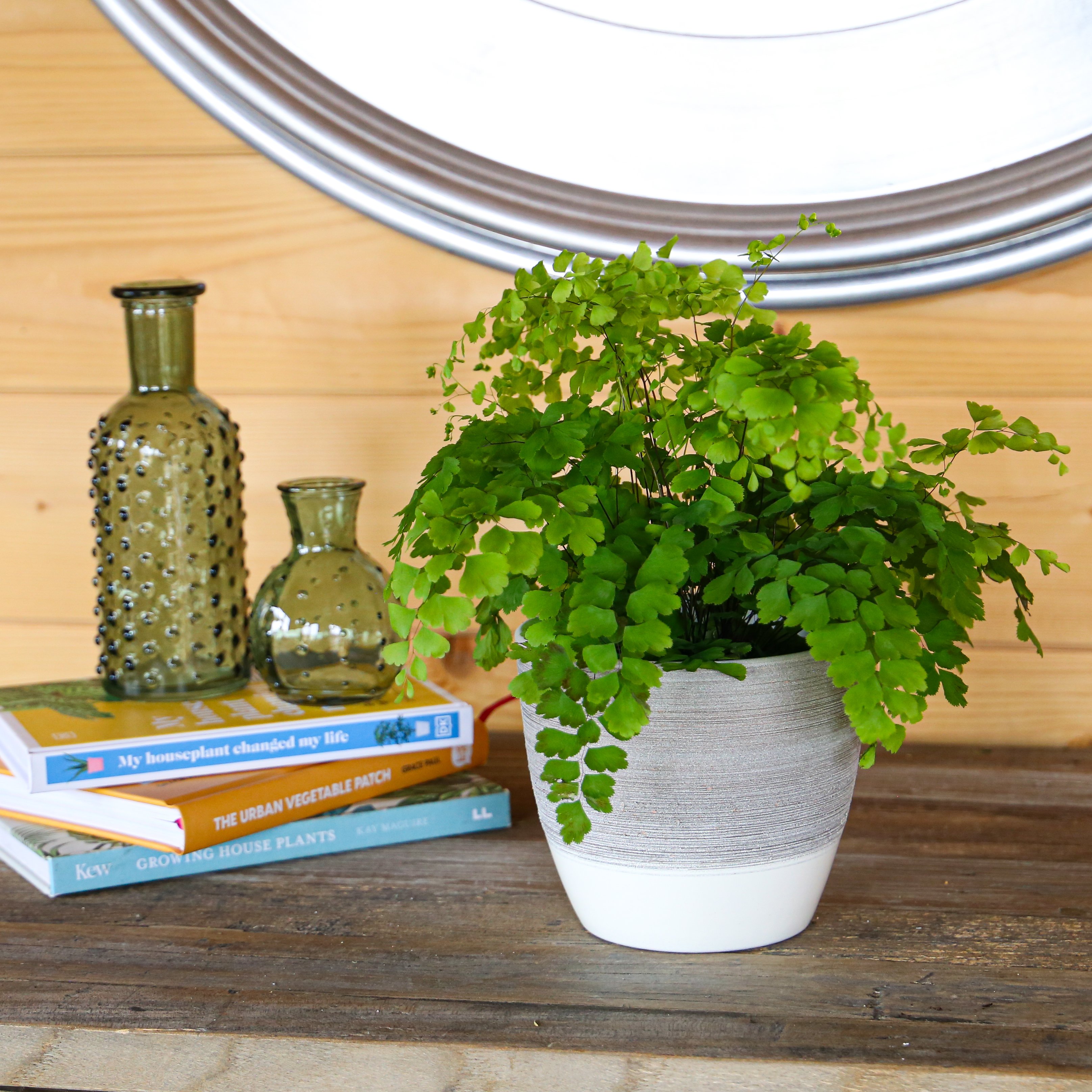
Common Pests And Diseases
Indoor ferns add lush greenery to any room, but they can be threatened by pests and diseases. Recognizing common problems helps keep ferns healthy. Let’s explore these challenges.
Spider Mites
Spider mites are tiny pests that can cause big problems for indoor ferns. Signs of an infestation include:
- Webbing on leaves or stems.
- Leaves with yellow or brown spots.
- Poor plant growth.
To combat spider mites, increase humidity and wash leaves with water. Sometimes, miticides are necessary.
Mealybugs
Mealybugs look like small, white cottony masses. They suck plant sap, weakening ferns. Check for:
- White, fluffy spots on stems or leaves.
- Stunted growth or yellowing leaves.
Treat mealybugs with alcohol-soaked cotton swabs or insecticidal soap.
Leaf Spot
Leaf Spot is a fungal or bacterial disease. It leaves unsightly marks on fern leaves. Symptoms include:
- Dark or brown spots with a yellow halo.
- Spots that grow or merge over time.
Prevent Leaf Spot by avoiding overhead watering and providing good air circulation. Fungicides may help in severe cases.
| Quick Guide to Fern Pests and Diseases | ||
| Pest/Disease | Signs | Treatment |
|---|---|---|
| Spider Mites | Webbing, yellow/brown leaf spots | Humidity, water, miticides |
| Mealybugs | White fluffy spots, yellow leaves | Alcohol swabs, insecticidal soap |
| Leaf Spot | Dark spots with yellow halo | Air circulation, fungicides |
Decorating With Indoor Ferns
Decorating with indoor ferns brings life and freshness to any room. These plants add a touch of nature’s serenity indoors.
With their lush green fronds, ferns can enhance any space, from living rooms to kitchens. Let’s explore creative ways to display these stunning plants in your home.
Hanging Baskets
Hanging baskets are perfect for showcasing ferns in high places. They allow the delicate fronds of ferns like the Boston or Maidenhair to cascade beautifully.
Here’s how to do it:
- Choose a sturdy basket with good drainage.
- Use a lightweight potting mix suitable for indoor plants.
- Ensure your hanging spot gets indirect sunlight.
This setup creates a stunning green display overhead, turning any corner into a focal point.
Terrariums
Terrariums offer a miniature greenhouse effect. They are ideal for small, moisture-loving ferns like the Button Fern. To set up a fern terrarium:
- Choose a clear glass container with a lid.
- Layer pebbles, activated charcoal, and moss before adding soil.
- Plant your ferns and mist them regularly.
This creates a self-sustaining ecosystem that looks magical on desks or shelves.
Fern Stands
Fern stands are traditional yet effective for displaying ferns. They elevate the plants to eye level, making them stand out. Consider these tips:
- Select a stand that fits your room’s decor.
- Position the stand in a spot with indirect light.
- Rotate the fern occasionally to ensure even growth.
With a fern stand, your plant becomes a striking green sculpture in any room.
Diy Fern Projects
Transform your home with lush greenery through these easy DIY fern projects. Ideal for plant lovers, these crafts bring a touch of nature indoors.
Whether a seasoned gardener or a crafting novice, these ideas will inspire your next green creation. Let’s dive into the world of ferns and explore some delightful projects.
Fern Wall Art
Create a botanical showcase with stunning fern wall art. This project is simple and adds a natural aesthetic to any room. Begin by selecting your favorite indoor fern types.
Press the fronds between book pages until they’re flat and dry. Next, arrange them in a frame on acid-free paper. Hang your framed ferns to enjoy a piece of everlasting nature.
Fern Wreaths
A fern wreath is a beautiful way to welcome guests. Start with a sturdy wire frame as the base. Gather various fern types for texture and contrast.
Attach the fronds to the frame with floral wire, covering it completely. Add a ribbon for hanging and display your handcrafted wreath on your door or wall.
Fern Terrariums
Build a mini ecosystem with a fern terrarium. Select a clear glass container with a wide opening. Layer pebbles, activated charcoal, and potting soil at the bottom.
Plant small ferns inside, ensuring they have room to grow. Mist the soil lightly and place the terrarium in indirect sunlight. Watch your miniature jungle thrive.
Frequently Asked Questions
What Is The Best Fern To Grow Indoors?
The best fern to grow indoors is the Boston fern, known for its adaptability and lush foliage. It thrives in indirect light and consistent moisture, making it ideal for home environments.
What Is The Prettiest Fern?
The Maidenhair Fern (Adiantum) ranks among the prettiest ferns due to its delicate, fan-shaped leaves and graceful growth pattern. Its unique, airy foliage adds a touch of elegance to any setting.
What Kind Of Ferns Are Houseplants?
Popular types of ferns for houseplants include Boston ferns, maidenhair ferns, bird’s nest ferns, and staghorn ferns. These varieties thrive indoors with proper care.
How Do I Identify My Fern?
Examine the frond shape, texture, and pattern to identify your fern. Note the plant’s size, color, and growth habit. Research common fern types or use a plant identification app for comparison.
Conclusion
Exploring the world of indoor ferns adds lush greenery and a touch of nature to any space.
Whether you choose the delicate Maidenhair or the robust Boston fern, each type brings unique charm. Remember, proper care is crucial to keep your ferns thriving.
Start with one or two varieties and see how they transform your home into a greener sanctuary. Happy planting!




